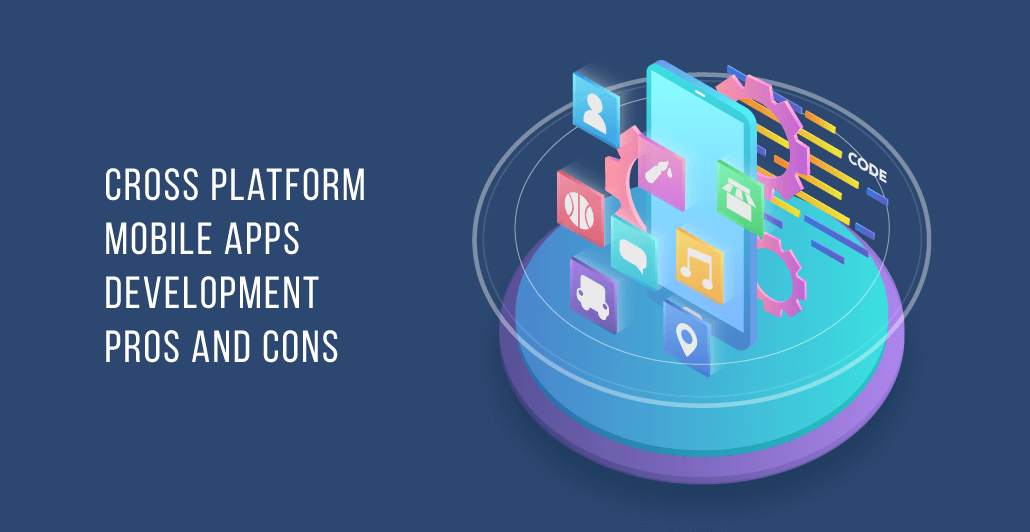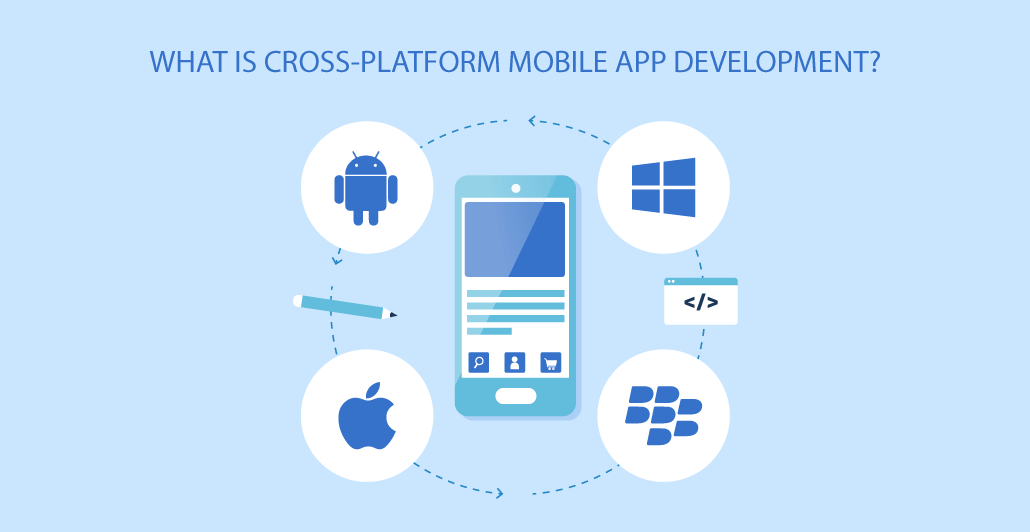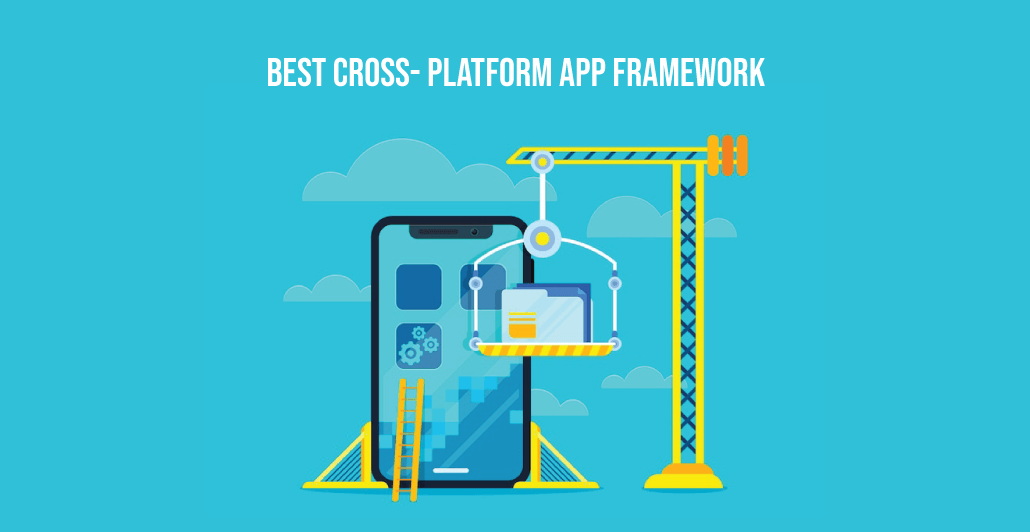INTRODUCTION
As the use of Smartphone’s is increasing day by day, mobile app development has become a critical aspect for businesses. Mobile app development helps businesses to increase their reach and connect with their target audience just by their fingertips. However, the market is flooded with different types of devices and operating systems. Here the problem arises due to this is, now it is necessary to develop a mobile app that works seamlessly across various platforms. Cross-platform mobile app development is a solution for this.
It enables developers to create apps that can run on multiple platforms using a single codebase. However, everything has two aspects, good or bad. So, cross-platform mobile app development has its benefits and drawbacks.
The benefits of cross-platform mobile app development are numerous, including cost-effectiveness, faster development time, and easier maintenance. By using a single codebase, developers can save time and resources compared to creating separate apps for each platform. Furthermore, cross-platform mobile app development offers easier maintenance and updates.
However, there are also drawbacks to cross-platform mobile app development, including potential performance issues, limitations in access to native features, and a higher learning curve for developers. These drawbacks can affect the user experience and limit the app’s functionality.
Despite these challenges, it has become an all-in-one solution for businesses and developers. We came up with a blog in which we discuss all the benefits and drawbacks of cross-platform mobile app development. So, to get a deep understanding of the benefits and drawbacks, let’s read.
WHAT IS CROSS-PLATFORM MOBILE APP DEVELOPMENT?
The process of creating mobile apps that can operate on different platforms, like iOS and Android, while using a single codebase is known as cross-platform app development. This allows developers to create an application that can be deployed to multiple operating systems without having to create separate versions for each platform.
Traditionally, app development requires the creation of separate code bases for each platform, which can be time-consuming and expensive. Cross-platform app development uses frameworks and tools that enable developers to write code once and deploy it to multiple platforms, reducing development time and costs.
There are several cross-platform app development frameworks available, including React Native, Xamarin, Flutter, and Ionic. Each framework has its unique features, strengths, and weaknesses, and developers choose the framework based on their requirements, the features they need, and their programming language preference.
WHICH FRAMEWORKS ALLOW CROSS-PLATFORM MOBILE APP DEVELOPMENT?
Developers can write code once and distribute it across various platforms using one of the many cross-platform mobile app development tools that are available. These frameworks offer a range of features and benefits, and the choice of which one to use will depend on your project requirements and personal preferences. Some popular cross-platform frameworks are:
- React Native: React Native is a well-liked framework for creating cross-platform mobile applications for iOS and Android that was created by Facebook.
- Xamarin: Owned by Microsoft, Xamarin allows developers to build mobile apps for iOS, Android, and Windows using a single codebase.
- Flutter: Developed by Google, Flutter is a framework for building high-performance, visually attractive apps for iOS, Android, and web platforms.
- PhoneGap: Based on the Apache Cordova project, PhoneGap allows developers to use HTML, CSS, and JavaScript to build apps for iOS, Android, and other mobile platforms.
- Ionic: Built on top of Angular, Ionic is a framework for building hybrid mobile apps that work on iOS, Android, and the web.
BENEFITS OF CROSS-PLATFORM MOBILE APP DEVELOPMENT
Cross-platform mobile app development is the process of creating mobile applications that can operate on different operating systems, such as iOS and Android, with just a single codebase. Some of the main advantages of cross-platform mobile app development are listed below:
1. COST-EFFECTIVENESS
The expense of developing a cross-platform app may be lower than that of a native app. With cross-platform app development, developers can write a single codebase that can run on multiple platforms. It eliminates the need to develop separate apps for each platform. This can speed up development and cut expenses.
2. FASTER TIME TO MARKET
Cross-platform app development can help developers bring their apps to market faster than native app development. With a single codebase, developers can simultaneously develop apps for multiple platforms, allowing them to release their apps sooner.
3. INCREASED REACH
With cross-platform app development, developers can reach a wider audience by creating apps that can run on multiple platforms. This could aid companies in growing their clientele and revenue.
4. EASIER MAINTENANCE
Maintaining multiple native apps can be challenging and time-consuming. With cross-platform app development, developers can make updates and changes to a single codebase. Which can then be installed on various devices. This can help reduce maintenance costs and save time.
5. IMPROVED USER EXPERIENCE
Cross-platform app development can help improve the user experience by ensuring that the app looks and feels the same on different platforms. This may increase customer retention and engagement.
6. ACCESS TO NATIVE FEATURES
Cross-platform app development frameworks such as React Native and Xamarin provide access to native features and functionalities. This allows developers to create apps that can take advantage of platform-specific features such as push notifications, cameras, and GPS.
7. BETTER SCALABILITY
Cross-platform app development can help businesses scale their apps more easily. As it allows them to quickly deploy their app across multiple platforms. This can assist companies in reaching new marketplaces and growing their consumer base.
8. REUSABILITY
Cross-platform apps enable developers to reuse the same codebase and development tools for future app development projects. It speeds up development and lowers costs.
DRAWBACKS OF CROSS-PLATFORM MOBILE APP DEVELOPMENT
Cross-platform mobile app development, which involves building mobile apps that can run on multiple platforms using a single codebase, has become increasingly popular in recent years. While there are many benefits to using this approach, there are also some drawbacks that should be considered. Here are a few:
1. PERFORMANCE
Cross-platform mobile app development tools typically use web technologies, such as HTML, CSS, and JavaScript, to create apps that can run on multiple platforms. However, these apps may not perform as well as native apps that are specifically designed for a particular platform.
2. USER EXPERIENCE
Because cross-platform apps are designed to work on multiple platforms. They may not always provide the best user experience on every platform. For example, an app that looks and works great on an iOS device may not look or work as well on an Android device.
3. LIMITED ACCESS TO PLATFORM-SPECIFIC FEATURES
Cross-platform app development tools may not provide access to all of the features and capabilities of a particular platform. This can limit the functionality of the app and prevent it from taking advantage of platform-specific features that could enhance the user experience.
4. DEVELOPMENT COMPLEXITY
While cross-platform app development can be faster and more cost-effective than developing separate apps for each platform, it can also be more complex. Developers must account for differences in platform capabilities, user interface guidelines, and performance considerations.
5. DEPENDENCE ON THIRD-PARTY TOOLS
Cross-platform app development tools are typically provided by third-party vendors. Which means that developers must rely on these tools to build their apps. This can create a dependence on these tools, which can be risky if the vendor goes out of business or stops supporting the tools.
CONCLUSION
Cross-platform mobile app development comes with many benefits as well as drawbacks. However, businesses should consider their specific needs and goals when deciding whether to adopt cross-platforms for their mobile app development services. Some projects may benefit from the cost savings and faster turnaround times offered by cross-platform development. While others may require a more customized, platform-specific approach.
Ultimately, regardless of the chosen approach, success in app development depends on prioritizing user experience, quality, and functionality. It is important for businesses to carefully evaluate their options and choose a development strategy that will best meet the needs of their customers and their business objectives.
FAQs
1. What are some popular cross-platform mobile app development frameworks?
There are various cross-platform mobile app development frameworks. Some popular frameworks include React Native, Flutter, Xamarin, and PhoneGap.
2. Can Cross-platform mobile apps have a similar user experience to native apps?
Yes, cross-platform mobile apps can have a similar user experience to native apps, as long as they are designed and developed correctly.
3. Which programming languages are typically used for Cross-platform mobile apps development?
JavaScript, TypeScript, C#, and Dart These are the programming languages that are used in cross-platform mobile app development.
4. What is the need for Cross-platform mobile app development?
Due to the various operating systems available on mobile devices, the need for cross-platform mobile app development arises.



